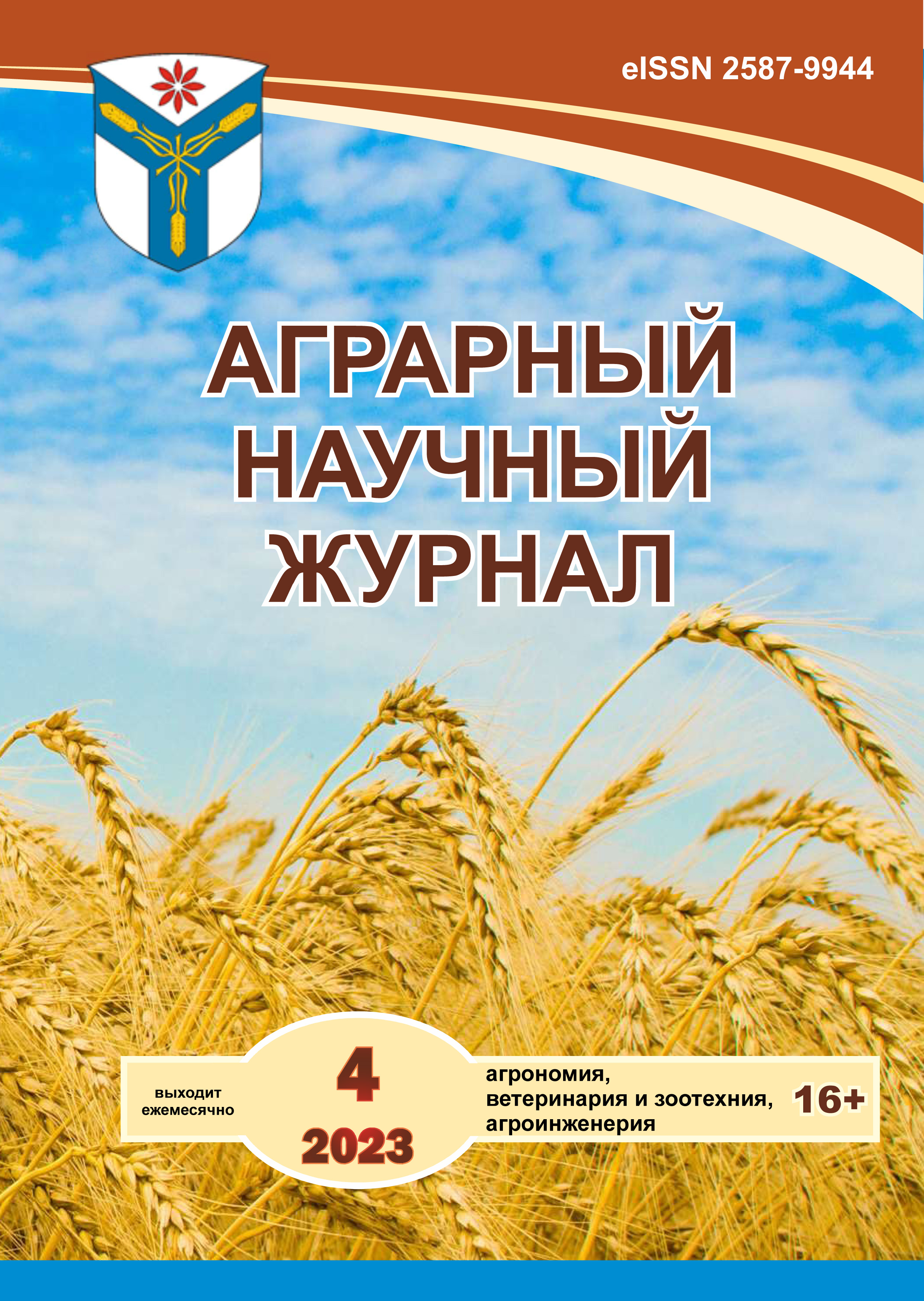Experience of application of a new feed additive in carp feeding
DOI:
https://doi.org/10.28983/asj.y2023i4pp44-49Keywords:
feeding, carp, probiotic, feed additiveAbstract
The article discusses the results of the application of a new feed additive Atysh (Enterococcus faecium (2?109 CFU) and Lactobacillus acidophilus (1?107 CFU)) in the feeding of carp fingerlings (Cyprinus carpio). After the introduction of the Atysh in the diet of carp at a dosage of 0.08 g / kg of feed, the growth of fingerlings by 7.54% was established in the fifth week of the experiment. The application of the probiotic did not have a negative effect on the amino acid composition of fish tissues. An increase in the level of macronutrients and a decrease in a number of essential and conditionally essential trace elements were also recorded. A significant decrease in a number of toxic elements in the carp body has been established.
Downloads
References
Дорохин Э. Ю., Чепелев Н. А., Дорохина Э. Э. Использование пробиотика нового поколения «Атыш» в кормлении сухостойных коров // Актуальные вопросы инновационного развития агропромышленного комплекса: материалы Междунар. науч.-практ. конф., Курск, 28 – 29 января. 2016. С. 34– 39.
Казаева Л. Х. Распределение кальция в теле клариевого сома (Clarias gariepinus Burchell, 1822) при его лимитированном поступлении из экзогенных источников // Международная научная конференция молодых ученых и специалистов, посвящ. выдающимся педагогам Петровской академии: сб. ст. М.: Изд-во РГАУ-МСХА имени К.А. Тимирязева, 2008. С. 158–165.
Пономарев С. В., Грозеску Ю. Н., Бахарева А. А. Индустриальное рыбоводство: учебник. 2-е изд., испр. и доп. СПб.: Лань, 2013. 416 с.
Ahire J. J., Mokashe N. U., Chaudhari B. L. Effect of Dietary Probiotic Lactobacillus helveticus on Growth Performance, Antioxidant Levels, and Absorption of Essential Trace Elements in Goldfish (Carassius auratus) // Probiotics Antimicrob Proteins. 2019. Vol. 11 (2). P. 559–568. DOI: 10.1007 / s12602-018-9428-5.
Bacteriome Structure, Function, and Probiotics in Fish Larviculture: The Good, the Bad, and the Gaps / N. Borges et al. // Annu Rev Anim Biosci. 2021. Vol. 9. P. 423–452. DOI: 10.1146/annurev-animal-062920-113114.
Braud A., J?z?quel K., Bazot S., Lebeau T. Enhanced phytoextraction of an agricultural Cr- and Pbcontaminated soil by bioaugmentation with siderophore-producing bacteria // Chemosphere. 2009. Vol. 74. P. 280?286. DOI: 10.1016 / j.chemosphere.2008.09.013.
Chen J., Ying G., Deng W. Antibiotic Residues in Food: Extraction, Analysis, and Human Health Concerns // J Agric Chem. 2019. Vol. 67 (27). P. 7569–7586. DOI: 10.1021/acs.jafc.9b01334.
The functionality of probiotics in aquaculture: An overview / M.T. El-Saadony et al. // Fish Shellfish Immunol. 2021. Vol. 117. P. 36–52. DOI: 10.1016/j.fsi.2021.07.007.
Mechanisms and the role of probiotic Bacillus in mitigating fish pathogens in aquaculture / F. Kuebutornye et al. // Fish Physiol Biochem. 2020. Vol. 46 (3). P. 819–841. DOI: 10.1007 / s10695-019-00754- у.
Olmos J., Acosta M., Mendoza G., Pitones V. Bacillus subtilis, an ideal probiotic bacterium to shrimp and fish aquaculture that increase feed digestibility, prevent microbial diseases, and avoid water pollution // Archives of Microbiology. 2020. Vol. 202. P. 427–435. DOI: 10.1007/s00203-019-01757-2.
Downloads
Published
Issue
Section
License
Copyright (c) 2023 The Agrarian Scientific Journal

This work is licensed under a Creative Commons Attribution-NonCommercial-NoDerivatives 4.0 International License.








